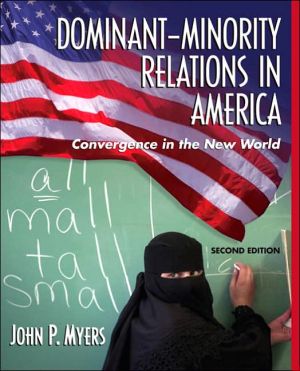Dominant-Minority Relations in America: Linking Personal History with the Convergence in the New World
Dominant-Minority Relations in America looks at inter-group relations from both conflict and assimilationist perspectives and encourages students to see that they are part of the process of dominant-minority interaction.\ New to this edition:\ \ A chapter on Arab-Americans has been added.\ Chapter 3, “Race and Ethnicity in Other Societies,” now contains an additional cross-cultural example on the colonial heritage of racism in Rwanda as well as updates to the material on Northern Ireland,...
Search in google:
This text looks at inter-group relations from both conflict and assimilationist perspectives and encourages students to see that they are part of the process of dominant-minority interaction. Booknews Drawing from sociology, social history, and personal family histories, Myers (Rowan University) examines racial and ethnic minority groups and their experiences in American society. He offers a theoretical model to explain and predict intergroup relations and applies it to the study of nine minority groups, during different periods. The groups studied are: Native Americans, African Americans, Irish Americans, German Americans, Italian Americans, Jewish Americans, Japanese Americans, Mexican Americans, and Vietnamese Americans. Annotation c. Book News, Inc., Portland, OR (booknews.com)
PrefacexiPart IIntroduction to Sociology and the Sociology of Minority Groups1Part IIHow Can We Apply Sociological Theory to Group Experience?157References551Index565
\ BooknewsDrawing from sociology, social history, and personal family histories, Myers (Rowan University) examines racial and ethnic minority groups and their experiences in American society. He offers a theoretical model to explain and predict intergroup relations and applies it to the study of nine minority groups, during different periods. The groups studied are: Native Americans, African Americans, Irish Americans, German Americans, Italian Americans, Jewish Americans, Japanese Americans, Mexican Americans, and Vietnamese Americans. Annotation c. Book News, Inc., Portland, OR (booknews.com)\ \








